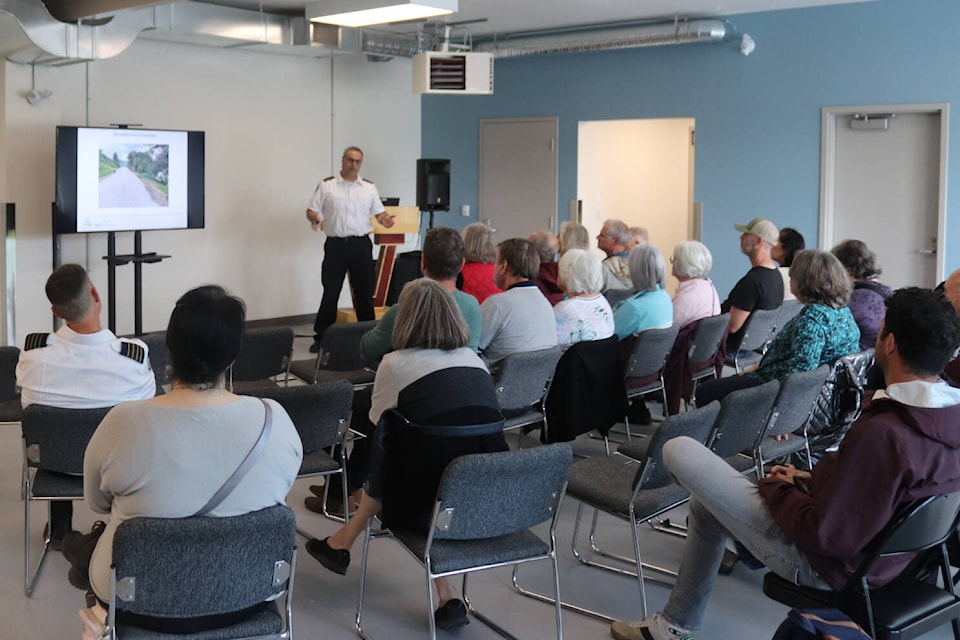The City of Vernon is engaging with residents to help make the community FireSmart as wildfire season approaches.
Residents were invited to attend an information session Wednesday, May 22, about FireSmart work that will soon be done on city-owned lands.
Fire chief David Lind said the information session was about building a community that is more resilient to the impacts of wildfire, and preparing the community for the coming wildfire season.
“Whether that be an ember shower or a flame front, really we’re just looking at what can be done, and actually quite a lot can be done,” Lind told The Morning Star.
Ember showers were responsible for the McDougall Creek wildfire jumping Okanagan Lake near Kelowna last summer, said Lind, adding Vernon could also be exposed to ember showers in the event of a future wildfire.
“In West Kelowna, what they found is most of the homes that were ignited weren’t a result of direct flame impingement. That was a result of embers getting into a fuel close to the house and then spreading into the home, or building-to-building transfer once a home’s caught on fire,” Lind said.
The information session included discussions about how residents can protect their homes from ember showers.
“What we have around our homes in an ember shower can have a huge impact,” Lind said, adding it’s common for embers to be cast two kilometres or more away from a blaze.
Residents can keep a “fuel free zone” around their house to guard against ember showers. A visit to firesmartbc.ca shows that a home’s immediate zone should be a non-combustible area that starts at the house and extends to a 1.5 metre perimeter around the home, including any attachments and outbuildings.
Roofs and gutters should be clear of combustible material, lawns should be cut to 10 centimetres or less, garden beds should be lined with crushed rock or decorative gravel instead of mulch, and yards should be free of combustible debris.
A FireSmart yard can also include trees, but the more fire resistant trees are deciduous (leafy) trees. Coniferous trees with cones and needles are highly flammable and should not be within 10 metres of a home.
In the past year, the City of Vernon provided a demonstration of what it looks like when fuels are disposed of, focusing on the area between Vernon Jubilee Hospital and Polson Park.
“That’s a good visible example that people can see,” Lind said. “It doesn’t mean clear cutting the trees, but it’s cleaning the underbrush and the understory and just making that area safer.”
Similar projects have been taking place in Vernon every year since 2015.
The fire chief said the threat of wildfires is “a monster of a problem,” but he hopes that people who attended the information session came away with a sense of empowerment, feeling that steps can be taken to reduce their wildfire risk.
“What’s important is that we keep moving the needle and we do practical things.”
At the session, Lind spoke about the importance of community-wide participation and creating a culture of FireSmart practices.
Vernon Fire Rescue Services deputy chief Mike Walroth spoke about working with neighbourhoods on FireSmart initiatives, including the city performing FireSmart work on high risk green spaces in the city.
Lind expects the city to hold more FireSmart information sessions in the future.
READ MORE: Cooler, wetter weather reduces wildfire activity in northeast B.C.
READ MORE: This wildfire season, changes are coming to better inform people about smoke
